#global water issues
Explore tagged Tumblr posts
Text
DRINKABLE WATER IS A PRECIOUS RESOURCE
youtube
According to (UNICEF) estimated that 2 billion people around the world don't have access to drinkable water. But how drinkable is hard to find when earth is 71% of earth is water.
#water scarcity#clean water#water crisis#water pollution#water conservation#global water issues#water purification#water quality#drinking water#water resources#water sustainability#water management#water shortage#water access#environmental issues#water treatment#water security#public health#drinkable water#Youtube
2 notes
·
View notes
Text
Water Crisis Sparks Protests in Adityapur's Srinath Global Village
Residents outraged over 8 lakh rupee water bill, demand action from builder and municipal corporation Severe water shortage highlights infrastructure challenges in rapidly growing urban areas. JAMSHEDPUR – Residents of Srinath Global Village in Ward 20 of Adityapur Municipal Corporation staged a protest on Sunday over ongoing water supply issues and exorbitant bills. The demonstration was…
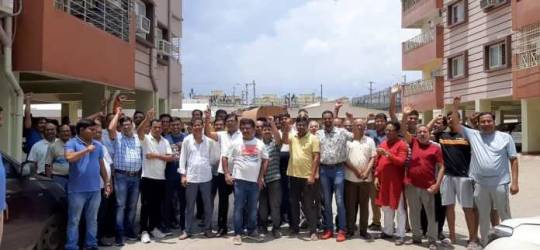
View On WordPress
#Adityapur Municipal Corporation#Adityapur water crisis#जनजीवन#groundwater depletion#Jamshedpur suburbs#Life#municipal infrastructure challenges#residential society problems#Srinath Global Village protest#urban development issues#water scarcity Jharkhand#water tanker supply
0 notes
Text
saw an article about how the water crisis in catalonia is causing problems for british travelers' annual spain holidays by 'forcing pool closures' and just the fact that water crises are positioned as annoying inconveniences for wealthy people on vacation rather than a very real problem for The People Who Live There Always is such a perfect example of how classism is applied on a global/international scale. i couldn't give less of a fuck about a brit's spain holiday being ruined, tell me how the water crisis is causing problems for locals and how tourism is exacerbating the issue.
#look at way that international newspapers report on the catalonia water crisis vs british newspapers#its very stark
6K notes
·
View notes
Text
…
#people being mad about groups supporting Palestinian fundraisers and not Israeli ones is so so funny#this is not a both sides issue babes!!! wtf does Israel need my money for????!!!#they have a government getting billions in aid and Palestine doesn’t have water or a globally recognized right to life
1 note
·
View note
Text
"The European Court of Human Rights (ECtHR) has issued a landmark ruling, declaring that failure to address environmental pollution constitutes a violation of the right to life. The court found that governments must inform citizens living in pollution-affected areas, allowing them to assess risks to their health and well-being.
The case was brought by Italian citizens affected by hazardous emissions and widespread illegal waste dumping and burning in Campania. The pollution crisis has had severe public health consequences, and the court determined that the Italian government’s failure to intervene effectively, despite the pollution being caused by private actors, breached human rights law.
The ruling is expected to set a precedent for environmental cases across Europe, reinforcing government accountability in pollution control.
ClientEarth fundamental rights lawyer Malgorzata Kwiedacz-Palosz hailed the decision as a crucial step in linking environmental protection to human rights.
“This ruling confirms that human rights depend on access to clean air, water, and soil. Governments have an obligation to shield citizens from environmental hazards, no matter their source. The court has now explicitly recognised that pollution can directly threaten the right to life, meaning states will face greater scrutiny and stricter enforcement obligations,” she said.
Leading epidemiologist Dr Fabrizio Bianchi, who submitted expert testimony, stressed the severe health risks linked to pollution in Campania, where nearly three million residents have been exposed to toxic air since the 1980s.
“The health impacts are undeniable—higher rates of cancer, cardiovascular disease, and respiratory illnesses. Authorities must implement immediate clean-up measures and long-term monitoring to protect public health,” he stated.
This ruling strengthens environmental case law within the European Court of Human Rights, setting a binding precedent for future litigation.
In a separate legal challenge in Italy, ClientEarth is supporting a mother’s case advocating for her son’s right to breathe clean air, citing Article 2 of the European Convention on Human Rights —the same provision that underpinned the ECtHR’s latest decision.
Legal experts from Torino Respira, a group supporting the case in Italy, welcomed the ruling: “This judgment reinforces our argument that failing to keep air pollution within legal limits violates a child’s fundamental right to life and health. It sets an authoritative precedent for human rights protections against environmental harm.”
With growing global recognition of environmental degradation as a human rights issue, this ruling is expected to reshape legal approaches to pollution-related cases, compelling governments to act decisively against environmental threats."
-via ESG Post, February 1, 2025
#italy#europe#pollution#air pollution#human rights#environmental news#environmental issues#good news#hope
3K notes
·
View notes
Text
Dandelion News - February 15-21
Like these weekly compilations? Tip me at $kaybarr1735 or check out my Dandelion Doodles!
1. Solar farms managed for nature boost bird abundance and diversity, new study finds

“There were more than twice as many farmland birds in the well-managed solar farms compared with the intensively farmed land, and nearly 16 times as many woodland birds. […] Overall, diversity was 2.5 times higher, while woodland birds were nine times more diverse.”
2. Washington judge blocks Trump’s gender-affirming care ban, says it's unconstitutional in multiple ways

“This marks the second time in a week that a judge has stood in the way of Trump’s attacks on trans kids. [… The ruling grants] a temporary restraining order that halts enforcement of provisions in Trump’s directive that would cut off federal funding to medical institutions that provide gender-affirming care to minors.”
3. Fog harvesting could provide water for arid cities

“17,000 sq m of mesh could produce enough water to meet the weekly water demand of [… the] urban slums. 110 sq m could meet the annual demand for the irrigation of the city's green spaces. Fog water could be used for soil-free (hydroponic) agriculture, with yields of 33 to 44lb (15 to 20kg) of green vegetables in a month.”
4. Audubon Applauds Bipartisan Federal Effort to Protect Delaware River Basin with Critical Reauthorization Bill

“The bill would […] ensure long-term conservation and restoration efforts, expand the official definition of the basin to include Maryland, and prioritize projects that serve small, rural, and disadvantaged communities. […] The watershed provides important year-round habitats and critical migratory stopovers for approximately 400 bird species[….]”
5. mRNA vaccines show promise in pancreatic cancer in early trial
“Half of the people in the study — eight of the participants — responded to the vaccine, producing T cells that targeted their tumors. […] Just two of the patients who had a response to the vaccine had their cancer return during the three-year follow- up, compared to seven of the eight who did not respond to the vaccine treatments.”
6. Minn. Lt. Gov. Flanagan Makes It Official; She's running for U.S. Senate

“[Flanagan has] “championed kitchen-table issues like raising the minimum wage, paid family and medical leave, and free school meals.” If elected, Flanagan, a tribal citizen of the White Earth Nation, would become the first Native American female U.S. senator in history.”
7. Federal Funding Restored for Low-Income Alabama Utility Assistance After Outcry

“A program meant to help low-income Alabamians pay their utility bills has resumed two weeks after it was canceled due to an executive order from President Donald Trump. […] “We can confirm the funds are reaching those affected by the previous pause[….]””
8. Modeling study suggests Amazon rainforest is more resilient than assumed

“[Previous] studies were either conducted with global climate models that used a simplified representation of convection [or were on a regional scale….] According to the computations, mean annual precipitation in the Amazon does not change significantly even after complete deforestation.“
9. States are moving forward with Buy Clean policies despite Trump reversal

““Buy Clean is a great example of how states and other nonfederal actors can continue to press forward on climate action, regardless of what the federal government does,” said Casey Katims, executive director of the U.S. Climate Alliance, a bipartisan coalition of two dozen governors.”
10. The rewilded golf courses teeming with life

“A wildflower meadow, ponds, scrub habitat, coastline and even an area of peat bog can be found on this little 60-acre (24-hectare) plot, which boasts roe deer, otters, lizards, eels and a huge array of insects and birds.”
February 8-14 news here | (all credit for images and written material can be found at the source linked; I don’t claim credit for anything but curating.)
#hopepunk#good news#nature#us politics#solar power#solar panels#solar energy#birds#biodiversity#gender affirming care#transgender#trans rights#trans healthcare#water conservation#habitat#migratory birds#vaccines#vaccination#mrna vaccine#pancreatic cancer#cancer#native american#alabama#low income#amazon rainforest#rainforest#executive orders#climate action#golf course#habitat restoration
951 notes
·
View notes
Text
issuu
#magazine#GlobalBiz Outlook Magazine proudly presents its latest issue#dedicated to honoring the incredible journey of leadership. Titled "Top Exceptional Leaders in Risk Advisory Services 2023#“ This edition is tribute to the Exceptional Business Leaders who are shaping risk and Advisory industry with their remarkable vision and u#a recognition of their invaluable contributions#and an inspiration to all aspiring leaders. These Leaders are not just breaking glass ceilings; they are shattering them entirely#paving the way for a more inclusive and empowered future.#Presenting: MGC Global Risk Advisory LLP Monish Chatrath Ruchi Dadwal#SyberNow Pooja Shimpi#BIG WATER CONSULTING (BWC)Nikhil Sharma and Risk Quotient Rakesh Dighe#TopExceptionalLeadersinRiskAdvisoryServices2023#Riskadvisory#CxOadvisory#ITriskadvisory#GDPR#PDP#cybersecurityspecialist#grc#ciso#cybersecurity#businesswomen#CustomSoftwaredevelopment#Maintenance#Professionalservices#SAP#GRC#HRM#CRM#businesscontinuitymanagement#Riskfinancing
1 note
·
View note
Text
The Best News of Last Week
1. ‘We are just getting started’: the plastic-eating bacteria that could change the world
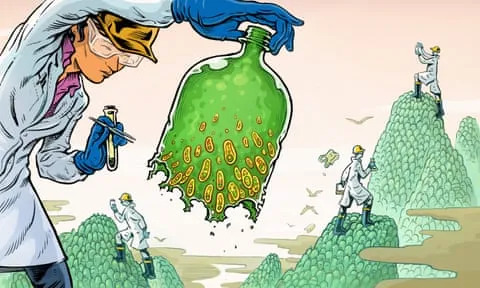
In 2016, Japanese scientists Oda and Hiraga published their discovery of Ideonella sakaiensis, a bacterium capable of breaking down PET plastic into basic nutrients. This finding marked a shift in microbiology's perception, recognizing the potential of microbes to solve pressing environmental issues.
France's Carbios has successfully applied bacterial enzyme technology to recycle PET plastic waste into new plastic products, aligning with the French government's goal of fully recycling plastic packaging by 2025.
2. HIV cases in Amsterdam drop to almost zero after PrEP scheme
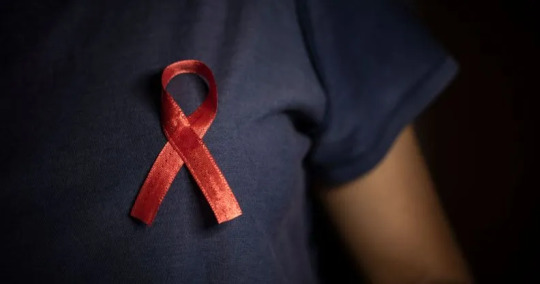
According to Dutch AIDS Fund, there were only nine new cases of the virus in Amsterdam in 2022, down from 66 people diagnosed in 2021. The organisation claimed that 128 people were diagnosed with HIV in Amsterdam in 2019, and since 2010, the number of new infections in the Dutch capital has fallen by 95 per cent.
3. Cheap and drinkable water from desalination is finally a reality
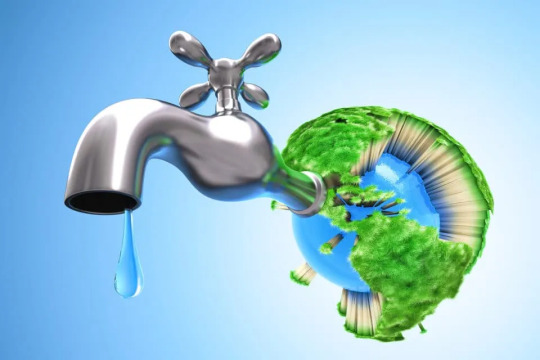
In a groundbreaking endeavor, engineers from MIT and China have designed a passive solar desalination system aimed at converting seawater into drinkable water.
The concept, articulated in a study published in the journal Joule, harnesses the dual powers of the sun and the inherent properties of seawater, emulating the ocean’s “thermohaline” circulation on a smaller scale, to evaporate water and leave salt behind.
4. World’s 1st drug to regrow teeth enters clinical trials

The ability to regrow your own teeth could be just around the corner. A team of scientists, led by a Japanese pharmaceutical startup, are getting set to start human trials on a new drug that has successfully grown new teeth in animal test subjects.
Toregem Biopharma is slated to begin clinical trials in July of next year after it succeeded growing new teeth in mice five years ago, the Japan Times reports.
5. After Decades of Pressure, US Drugmaker J&J Gives Up Patent on Life-Saving TB Drug
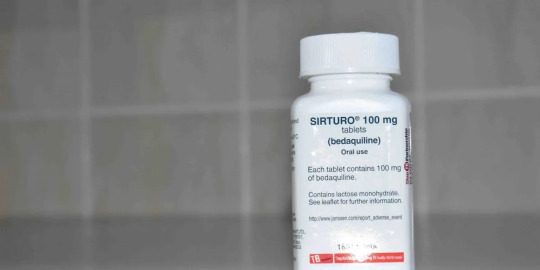
In what can be termed a huge development for drug-resistant TB (DR-TB) patients across large parts of the world, bedaquiline maker Johnson and Johnson said on September 30 (Saturday) that it would drop its patent over the drug in 134 low- and middle-income countries (LMICs).
6. Stranded dolphins rescued from shallow river in Massachusetts
youtube
7. ‘Staggering’ green growth gives hope for 1.5C, says global energy chief

The prospects of the world staying within the 1.5C limit on global heating have brightened owing to the “staggering” growth of renewable energy and green investment in the past two years, the chief of the world’s energy watchdog has said.
Fatih Birol, the executive director of the International Energy Agency, and the world’s foremost energy economist, said much more needed to be done but that the rapid uptake of solar power and electric vehicles were encouraging.
---
That's it for this week :)
This newsletter will always be free. If you liked this post you can support me with a small kofi donation here:
Buy me a coffee ❤️
Also don’t forget to reblog this post with your friends.
11K notes
·
View notes
Text
Drinkable water is a scarce resource that needs saving
#water scarcity#clean water#water crisis#water pollution#water conservation#global water issues#water purification#water quality#drinking water#water resources#water sustainability#water management#water shortage#water access#environmental issues#water treatment#water security#public health#drinkable water
0 notes
Text
Achieving Goal 6: Clean Water and Sanitation for a Sustainable Future
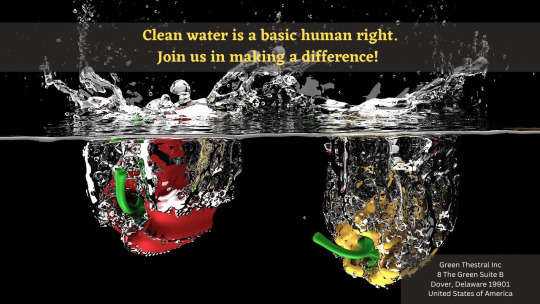
Clean water and sanitation are fundamental human rights and essential for the well-being and prosperity of communities worldwide. Access to clean water is crucial for drinking, hygiene, agriculture, and industry. Sanitation facilities ensure the proper disposal of waste and prevent the spread of diseases. Recognizing the importance of water and sanitation, the United Nations has set Goal 6 as part of its Sustainable Development Goals (SDGs). In this article, we will explore the significance of Goal 6, its targets, and the actions needed to achieve clean water and sanitation for all.
The Importance of Goal 6: Clean Water and Sanitation
Access to clean water and sanitation is not only a pressing global issue but also a matter of basic human rights. Shockingly, according to the World Health Organization (WHO) and UNICEF, a staggering 2.2 billion people worldwide lack access to safely managed drinking water, while an overwhelming 4.2 billion people do not have access to safely managed sanitation services. These numbers highlight the scale of the problem and the urgent need for action.
The consequences of inadequate water and sanitation are far-reaching and severe. One of the most significant impacts is the spread of waterborne diseases. Contaminated water sources and poor sanitation facilities create a breeding ground for diseases like cholera, typhoid, and dysentery. These illnesses disproportionately affect vulnerable populations, including children and the elderly, leading to increased morbidity and mortality rates. Lack of access to clean water and sanitation perpetuates a cycle of poverty and ill-health, as communities struggle to break free from the burden of preventable diseases.
Child mortality is also closely linked to the absence of clean water and sanitation. Unsafe drinking water and inadequate sanitation facilities contribute to the deaths of hundreds of thousands of children each year. Diarrheal diseases, in particular, claim the lives of many young children, as their weakened immune systems make them more susceptible to the harmful effects of contaminated water. Furthermore, the time spent collecting water from distant sources and the lack of proper sanitation facilities affect children's education and overall development, perpetuating a cycle of disadvantage and limited opportunities.
In addition to the human toll, inadequate access to clean water and sanitation hinders economic development. Communities that lack reliable access to clean water face numerous challenges. For instance, the burden of water collection falls primarily on women and girls, who often spend hours each day walking long distances to fetch water. This time-consuming task takes away from opportunities for education, income generation, and other productive activities, reinforcing gender inequalities and limiting economic empowerment.
Moreover, industries and businesses also suffer when water and sanitation are compromised. Lack of clean water can impede agricultural production, affecting crop yields and food security. Industries that rely on water, such as manufacturing and tourism, face operational challenges and increased costs when they must rely on alternative, often expensive, water sources. Inadequate sanitation can lead to environmental pollution, further exacerbating health risks and harming ecosystems, which are essential for the well-being of communities and biodiversity.
The gravity of the water and sanitation crisis necessitates urgent action and a comprehensive approach. Goal 6 of the Sustainable Development Goals (SDGs) recognizes the importance of clean water and sanitation for all and sets targets to address these challenges. Governments, organizations, and individuals must prioritize investment in infrastructure development, education and awareness programs, sustainable practices, and innovative solutions.
By investing in infrastructure, such as water treatment plants, pipelines, and sanitation facilities, governments can improve access to clean water and proper waste management. Concurrently, education and awareness programs can promote proper hygiene practices, behavioral change, and the sustainable use of water resources. It is crucial to empower communities with knowledge and tools to protect their water sources and ensure sustainable practices are adopted at the individual and community levels.
Sustainable agriculture practices also play a significant role in achieving clean water and sanitation goals. Implementing water-efficient irrigation techniques, promoting organic farming, and reducing the use of harmful pesticides and fertilizers can help conserve water resources and prevent pollution. By embracing technology and innovation, such as water purification systems, smart water management systems, and affordable sanitation technologies, we can bridge the gap in access to clean water and sanitation, particularly in remote and underserved areas.
Collaboration and partnerships among governments, non-governmental organizations (NGOs), businesses, and communities are crucial for progress. By joining forces, sharing expertise, and pooling resources, we can overcome financial constraints, leverage innovative solutions, and achieve more significant impact. International cooperation, aid, and support can also play a pivotal role in assisting countries with limited resources to improve their water and sanitation infrastructure and practices.
The lack of access to clean water and sanitation remains a global crisis with far-reaching consequences. The numbers are staggering, and the impacts on health, child mortality, and economic development are severe. Achieving Goal 6 of the SDGs requires concerted efforts, investment in infrastructure, education, sustainable practices, and innovative solutions. It is only through collaboration and a commitment to this fundamental human right that we can ensure a sustainable future where every individual has access to clean water and sanitation, leading to improved health, reduced poverty, and enhanced opportunities for all.
Targets for Goal 6
Goal 6 encompasses multiple targets that aim to address the water and sanitation challenges. These targets include:
Achieving universal and equitable access to safe and affordable drinking water for all.
Ensuring access to adequate and equitable sanitation and hygiene for all.
Improving water quality by reducing pollution and increasing water treatment.
Increasing water-use efficiency and ensuring sustainable water withdrawals.
Implementing integrated water resources management at all levels.
Protecting and restoring water-related ecosystems, including mountains, forests, wetlands, rivers, and lakes.
Actions to Achieve Goal 6
To achieve Goal 6 and ensure clean water and sanitation for all, various actions need to be undertaken at local, national, and global levels. Here are some key actions:
Infrastructure Development: Governments and organizations should invest in infrastructure development to improve water and sanitation systems. This includes building water treatment plants, pipelines, and sanitation facilities to ensure access to clean water and proper waste management.
Education and Awareness: Raising awareness about the importance of clean water and sanitation is crucial. Education programs can help communities understand the benefits of proper hygiene practices and promote behavior change to prevent water pollution and ensure the sustainable use of water resources.
Sustainable Agriculture: Promoting sustainable agriculture practices can reduce water pollution from pesticides and fertilizers. Implementing efficient irrigation techniques, such as drip irrigation, can also conserve water resources.
Collaboration and Partnerships: Addressing the water and sanitation challenges requires collaboration between governments, NGOs, businesses, and communities. Partnerships can bring together expertise, resources, and innovative solutions to overcome the barriers to clean water and sanitation.
Technology and Innovation: Embracing technological advancements can greatly contribute to achieving Goal 6. Innovative solutions, such as water purification systems, smart water management systems, and affordable sanitation technologies, can improve access to clean water and sanitation in remote areas.
Water Conservation: Encouraging water conservation practices at the individual and community levels is essential. Simple measures like fixing leaks, using water-efficient appliances, and harvesting rainwater can go a long way in reducing water wastage and ensuring the availability of clean water.
Success Stories and Best Practices
Several success stories demonstrate that progress can be made in achieving Goal 6. For instance, in Rwanda, the government's commitment to improving water and sanitation services has resulted in significant improvements in access to clean water, particularly in rural areas. The introduction of community-led total sanitation programs in Bangladesh has successfully improved sanitation practices and reduced open defecation.
Challenges and the Way Forward
Despite the progress made, significant challenges remain in achieving Goal 6. Limited financial resources, inadequate infrastructure, climate change impacts, and conflicts are some of the obstacles that need to be overcome. However, there are opportunities to address these challenges. By increasing investments in water and sanitation, promoting sustainable practices, and strengthening partnerships, we can create a future where clean water and sanitation are accessible to all.
Conclusion
Goal 6: Clean Water and Sanitation is a critical component of the Sustainable Development Goals, highlighting the significance of access to clean water and sanitation for all. Achieving this goal requires concerted efforts from governments, organizations, communities, and individuals. By implementing the targets and taking necessary actions, we can ensure a sustainable future with clean water and sanitation, improving health, reducing poverty, and fostering economic development worldwide. Let us work together to make Goal 6 a reality and create a world where no one is deprived of this basic human right.
#Importance of clean water and sanitation#Achieving Goal 6: Clean Water and Sanitation#Access to clean water and sanitation#Waterborne diseases and sanitation#Goal 6 and global water crisis#Sustainable Development Goal 6: Clean Water and Sanitation#Lack of access to clean water and sanitation#Water and sanitation challenges worldwide#Promoting clean water and sanitation for all#Impact of inadequate water and sanitation#Clean water and sanitation for a sustainable future#Achieving universal access to clean water#Improving sanitation facilities worldwide#Water quality and pollution reduction#Sustainable water management practices#Protecting water-related ecosystems#Infrastructure development for clean water#Education and awareness for water and sanitation#Innovative solutions for clean water access#Addressing water scarcity and sanitation issues#Achieving equitable access to clean water#Ensuring sustainable sanitation services#Water conservation for a better future#Economic benefits of clean water and sanitation#Overcoming water and sanitation challenges#Success stories in achieving Goal 6#Partnership for clean water and sanitation#Technology advancements in water management#Achieving clean water and sanitation in rural areas#Breaking the cycle of poverty through water and sanitation
0 notes
Text
DPxDC The Witch and The Ghost
On the subject that came up in my recent post, in my head, Sam and Danny are constantly having beef with each other. But never seriously.
The thing is, Danny has a lot of issues with a lot of things. He is not dead and not alive and then somehow both at the same time. He lives with parents who literally hunt him for sport, even if they are shit at it. His godfather is another can of worms that he refuses to touch entirely. On top of that, there's school, and occasional bullying, and hormones acting up, and ghost problems to deal with.
Which is why Danny is frustrated most of the time. He does a good job at keeping it at bay and not snapping at people for the tiniest inconveniences - partially, it's because he knows that his mild snapping can possibly leave the recipient frozen in a block of ice and humans are prone to hypothermia.
So, Danny is putting a lot of effort into staying reasonable and calm. And he is doing a good job at it!
And then, there's Sam. Sam is used to arguing with her parents at any given moment over literally anything. Sam is an activist who can and will insist on coming out victorious out of any fight she picks at, be it the choice of a salad dressing or discussion of global warming. Sam has opinions and is not afraid to share - more like enforce, actually - them. What's more, Sam is liminal, and she can withstand a lot more blunt ghostly force than any other human being.
Sam and Danny are friends, there's no doubt there. They love each other, they support each other, they will quite literally tear the world apart for each other.
They also argue about every fucking thing on earth. They fight over whose turn it is to pay for burgers every time they get them - which is at least thrice a week - and over the best phrase to teach a pet parrot, and the difference between 'affect' and 'effect' used in context. They put some discussions on pause just in order to find and provide research, and then they slap each other with piles of said research across the faces and get into a fist fight over water pollution.
Sam treats it as a fun activity and maybe a test run for her other fights and discussions with other people. She doesn't mind Danny's frustration and his occasional violence in the slightest, knowing perfectly well that he is no danger to her, and if she asks, he would stop at once.
Danny, on the other hand, gets a great outlet to vent and release all his pent-up emotional baggage. Sure, sometimes their fights get gruesome, and sometimes they hold grudges for days, and sometimes they can barely tolerate seeing each other because of it. But he also knows that in the end, they are friends, they are fraid, and he is safe with Sam no matter what he says or how offensive something sounds to her. Because in the end, it doesn't really matter to her. Not more than him.
Tucker is just very chill with both of them. He doesn't bother sticking with any of the sides of the arguments, switching between them or not taking part at all. He knows they are fine. He knows they just like fighting, for some weird reason. To be fair, he also picks an occasional fight or two with Sam just for the fun of it.
Gotham in general, and Batfam specifically (or Justice League, if you want) are so not prepared for the three of them when they move out of Amity. Especially if there's also Dani and/or Jazz thrown in the mix to spice things up. None of them truly bother to keep from using their powers, albeit mildly: some little hex and jinx here and there from Sam, a frozen patch on the pavement to make someone slip from Danny, some minor hacking from Tucker, a prank or two using the intangibility from Dani.
It leads to a lot of very confusing situations.
Like Batman showing up to the recent Riddler scheme to find two random teens loudly arguing over the answer to the puzzle while Riddler himself looks completely given up on getting their attention back to the important thing. The important thing being a bomb with a ticking timer on it.
Or Robin finding two siblings brawling on the rooftop, growling and screaming, rolling around and kicking their feet. He is not quick enough to catch them from falling off the edge of the three-story building, but when he peeks down, the siblings are still fighting down on the street, seemingly not even noticing the fall.
Or Red Hood having his guns miraculously stolen midfight because three kids have decided to have a sharpshooter competition with the goons acting as target practice. He honestly can't bring himself to mind, though, they really are great at hitting all the kneecaps within range. He is rather grateful they haven't included his own kneecaps in the heat of it. At least their responsible adult - a very pretty redhead - had apologized and returned his guns back.
Spoiler absolutely loves it when, right as she is about to get caught in Poison Ivy's trap, two teens show up to simultaneously wrestle with the mad greenery with their bare hands and lecture Ivy on the imprint she is leaving on the ecosystem of Gotham.
However, Red Robin absolutely hates that someone keeps getting through all of his firewalls just to leave a few cheeky comments on his recent case files. It doesn't matter that they leave some valuable intel and provide a good conclusion as well, it's the principle of the thing.
All in all, Danny and Sam are the unstoppable force meeting the immovable object, but they trade and switch places constantly and they are most definitely enjoying themselves while at it.
Everyone else, though? That depends on the circumstances.
#danny phantom#dpxdc#dc x dp#batman#batfam#cork prompts#sam manson#tucker foley#sam and danny are the type of friends who relish in the opportunity to fight#and yet they are not frenemies they are just friends#gotham is confused at them
775 notes
·
View notes
Text
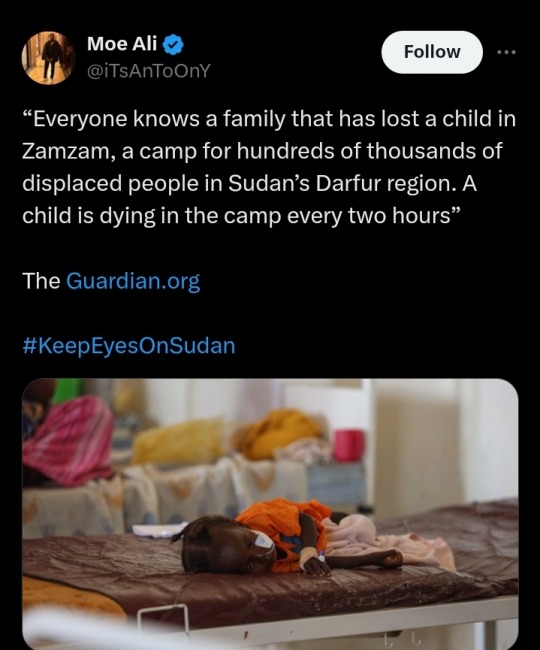
Everyone knows a family that has lost a child in Zamzam, a camp for hundreds of thousands of displaced people in Sudan’s Darfur region. Hunger and disease have become grim features of daily life, and a child is dying in the camp every two hours, according to the medical charity Médecins Sans Frontières (MSF). “There have been many, I cannot remember them all. The latest died yesterday,” says Laila Ahmed, who lives in the camp with her nine children. Like most of Sudan, Zamzam has had no phone or internet connection for the past two weeks, but the Guardian managed to talk to refugees through a satellite link.They described a desperate situation, with no clean drinking water and little access to medical treatment. Families share meagre food stores. Almost 25% of children are severely malnourished. Dengue fever and malaria are sweeping through the camp. Beyond its perimeters roam militiamen who kidnap or attack women who venture out to collect firewood or grass for their donkeys. Apart from one small distribution in June, no food aid has arrived since fighting erupted across Sudan on 15 April. “I think we are approaching starvation,” says Abdullatif Ali, a father of six. “The people are suffering from malnutrition, disease – many issues.” Zamzam was set up in the mid-2000s in the wake of the genocide in Darfur, carried out by predominately Arab militias called the Janjaweed. Before the current war between the Sudanese army and the paramilitary Rapid Support Forces (RSF), which grew from the Janjaweed, a patchwork of international aid agencies provided services to Zamzam, but they abruptly pulled out when the fighting started. Since then, the camp’s population has swelled with new arrivals fleeing fighting farther south. “This is a vast, overpopulated camp that needs a large amount of support, but it has been completely left on its own,” says Emmanuel Berbain, an MSF doctor, who visited recently. “It’s a complete catastrophe, to be honest.”
#sudan#keep eyes on sudan#free sudan#sudan genocide#sudan crisis#eyes on sudan#all eyes on sudan#famine#genocide
1K notes
·
View notes
Text
Green energy is in its heyday.
Renewable energy sources now account for 22% of the nation’s electricity, and solar has skyrocketed eight times over in the last decade. This spring in California, wind, water, and solar power energy sources exceeded expectations, accounting for an average of 61.5 percent of the state's electricity demand across 52 days.
But green energy has a lithium problem. Lithium batteries control more than 90% of the global grid battery storage market.
That’s not just cell phones, laptops, electric toothbrushes, and tools. Scooters, e-bikes, hybrids, and electric vehicles all rely on rechargeable lithium batteries to get going.
Fortunately, this past week, Natron Energy launched its first-ever commercial-scale production of sodium-ion batteries in the U.S.
“Sodium-ion batteries offer a unique alternative to lithium-ion, with higher power, faster recharge, longer lifecycle and a completely safe and stable chemistry,” said Colin Wessells — Natron Founder and Co-CEO — at the kick-off event in Michigan.
The new sodium-ion batteries charge and discharge at rates 10 times faster than lithium-ion, with an estimated lifespan of 50,000 cycles.
Wessells said that using sodium as a primary mineral alternative eliminates industry-wide issues of worker negligence, geopolitical disruption, and the “questionable environmental impacts” inextricably linked to lithium mining.
“The electrification of our economy is dependent on the development and production of new, innovative energy storage solutions,” Wessells said.
Why are sodium batteries a better alternative to lithium?
The birth and death cycle of lithium is shadowed in environmental destruction. The process of extracting lithium pollutes the water, air, and soil, and when it’s eventually discarded, the flammable batteries are prone to bursting into flames and burning out in landfills.
There’s also a human cost. Lithium-ion materials like cobalt and nickel are not only harder to source and procure, but their supply chains are also overwhelmingly attributed to hazardous working conditions and child labor law violations.
Sodium, on the other hand, is estimated to be 1,000 times more abundant in the earth’s crust than lithium.
“Unlike lithium, sodium can be produced from an abundant material: salt,” engineer Casey Crownhart wrote in the MIT Technology Review. “Because the raw ingredients are cheap and widely available, there’s potential for sodium-ion batteries to be significantly less expensive than their lithium-ion counterparts if more companies start making more of them.”
What will these batteries be used for?
Right now, Natron has its focus set on AI models and data storage centers, which consume hefty amounts of energy. In 2023, the MIT Technology Review reported that one AI model can emit more than 626,00 pounds of carbon dioxide equivalent.
“We expect our battery solutions will be used to power the explosive growth in data centers used for Artificial Intelligence,” said Wendell Brooks, co-CEO of Natron.
“With the start of commercial-scale production here in Michigan, we are well-positioned to capitalize on the growing demand for efficient, safe, and reliable battery energy storage.”
The fast-charging energy alternative also has limitless potential on a consumer level, and Natron is eying telecommunications and EV fast-charging once it begins servicing AI data storage centers in June.
On a larger scale, sodium-ion batteries could radically change the manufacturing and production sectors — from housing energy to lower electricity costs in warehouses, to charging backup stations and powering electric vehicles, trucks, forklifts, and so on.
“I founded Natron because we saw climate change as the defining problem of our time,” Wessells said. “We believe batteries have a role to play.”
-via GoodGoodGood, May 3, 2024
--
Note: I wanted to make sure this was legit (scientifically and in general), and I'm happy to report that it really is! x, x, x, x
#batteries#lithium#lithium ion batteries#lithium battery#sodium#clean energy#energy storage#electrochemistry#lithium mining#pollution#human rights#displacement#forced labor#child labor#mining#good news#hope
3K notes
·
View notes
Text
BLACK MAN INVENTS REVOLUTIONARY WATER MACHINE
Moses West, an engineer in San Antonio, Texas, has captured global attention with a water-generating machine. This device extracts moisture from the air, cooling it to form water droplets, much like how a refrigerator condenses humidity. By mimicking the natural process of cloud formation, this brother’s machine creates a controlled mini rain cloud to produce clean drinking water.
What truly sets Moses apart is his dedication to helping those in need. He provides water at no cost, targeting struggling communities. His efforts have already made a difference in Flint, Michigan, Puerto Rico, and the Bahamas in the wake of Hurricane Dorian.
This selfless approach tackles the urgent global issue of clean-water scarcity. According to the UN World Water Development Report, 2 billion people worldwide (26 per cent) lack reliable access to safe drinking water. Moses’s invention can ensure clean water reaches those who otherwise might not have access.
Video Credit: @mosesfoundation / @U_green_Us (IG)
660 notes
·
View notes
Text
💤 Dreamy Astrology Observations 💤
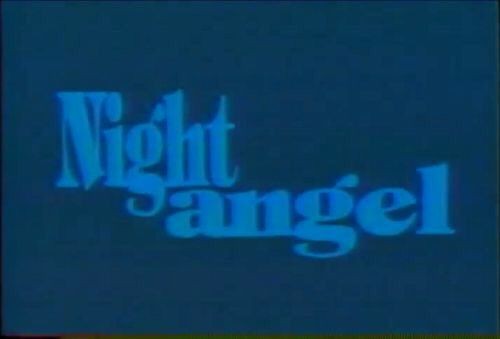

💤 Neptune aspecting Venus can daydream about their crushes/lovers & and having scenarios in their head about them
💤 Neptune aspecting the Midheaven can inspire and influence other people, for example being some sort of influencer
💤 Neptune in the 5H/7H can fantasize about a happy life, maybe with children/spouse and overall happiness if you know in tarot terms this energy can symbolize 10 of cups
💤 Neptune aspecting Uranus, people find you different and unique, some sort of like "I never met a personlike you before but I like it"
💤 Venus in Aquarius or at 11°. 23° degrees can have a large group of friends, they can be seen as an example for others when it comes to friendship
💤 Heavy Moon aspects in your chart can make you a very dreamy/soft/kind person, you can radiate positive vibes

💤 Sun in the 8th/12th houses give the "mystic" one vibes, your subconscious is very powerful and you can often find yourself being spiritual
💤 Sun in Pisces Degrees 12°. 24° can have such mesmerizing tired eyes you'll ever see, their eyes radiate ocean waves
💤 Neptune aspecting the Ascendant especially conjunction can make the native to lose the connection with reality sometimes. They can often find themselves dreaming about sort of situations
💤 Chiron aspecting Neptune natives can be surrounded by people who don't believe in their dreams or desires, who think their dreams will never be fulfilled, is a very powerful placement for those who believe in themselves
💤 Fire Venus or Moon can make you to be attracted into passionate music/art/songs, often listening to dirty songs
💤 Capricorn/Virgo and Taurus Suns can be the most practical people in the room, they always have a solution and a back up plan for everything
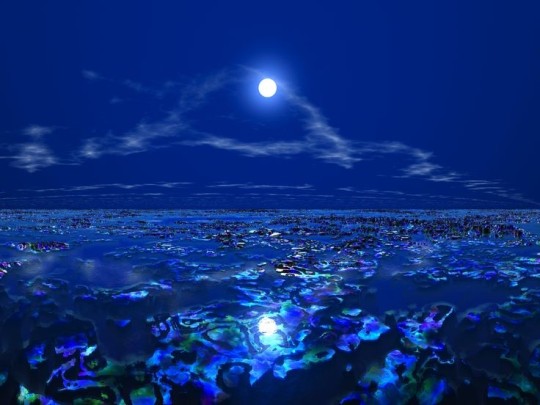
💤 A REMINDER that the moon phase of your moon sign can influence it A LOT, for example a Leo Moon born under the 1st quarter will be very different from a Leo Moon born under the 3rd or last quarter (if that makes sense)
💤 Virgo Sun/Moon/Rising can be the biggest nutritionist ever. They'll have a naturist remedy for everything
💤 Sagittarius Venus Moon or those planets in the 9H, those placements are giving Tarzan!! someone very curious, wild, fierce, and charming!! They get along with lots of people
💤 Sun/Moon or Mars in the 6H need to do something productive or they can fall under a depression state and feel bad, you need activities!!
💤 Mars/Pluto/Saturn or Lilith in the 4H, if you have a disturbing family life, it will get better when you'll move out and have your own house
💤 Libra Taurus and Capricorn IC/4H can find themselves decorating their stuff with lots of vintage stuff

💤 If you have Venus in Capricorn or in the 10H and all your relationships failed, is an indicator that you need higher standards
💤 Venus in Sagittarius or 9H native is searching for someone they can evolve amd grow up together with, they are like a global mix of fun, culture, love and music
💤 Sagittarius Risings have their 4H in Pisces, they can decorate their house/home with a deep spiritual things like dreamcatchers, crystals, etc
💤 Never make fun of someone's culture or background especially if they have Sag in their big 3 or big 6 because you gonna recieve the same energy back to you
💤 Mercury or Venus in Pisces, omg I wish I had these placements instead of Scorpio...Lets trade...These placements are mesmerizing to have, especially at communicating and sharing their love
💤 Saturn/Venus and sometimes Moon in the 12th house can indicate that you're going to marry a bit later than others
💤 Saturn in the 10H!! This placement is extremely powerful. If someone does you dirty the karma comes back and exposes the person who did you wrong to the PUBLIC/people and you can find people standing up for you after someone did you dirty
💤 Lilith in Water Signs can have issues or troubles with acknowledging their feelings, because the water element rules over the feelings and Lilith indicates a wound there
💤 Capricorn Risings even if they are mature and solide, they most times wish for a sentimental and kind partner due to their 7H in Cancer

💤 Mercury in the 11H natives don't like to talk for nothing, if you bring a conversation with them make sure to finish it
💤 Venus in Leo Degrees 5°, 17°, 29° may take love to another level, you have to focus all of your attention on them if you want to attract them
💤 Ascendant in Gemini Degrees 3°, 15°, 27° degrees natives have an extremely catchy voice, is that voice that you'll remember ages and ages and especially their jokes as well
💤 If you have your IC in the 5th house you were probably raised in household with a lot of music/fun/creativity, i have this placement and my family is crazy when it comes to music style
💤If you have an Air Moon could probably be a little more logical than sentimental, like logic over feelings
💤 Sagittarius/Libra combo placements in a chart can make someone very artistic, passionate, carefree. They can aslo have a beautiful writing style
💤 Gemini/Aquarius Mercury/Moon/Venus can be that one person who has an digital diary instead of the standard book diary. They prefer the technology
💤 Mars in Pisces Degrees 12°. 24° may like to combine love/sex with art, for example painting pictures of naked statues, intense love paintings
💤 Scorpio Sun/Moon/Rising has an intense charisma, they are like a magnet, attracting all kids of people

💤 Aries Sun/Mars/Venus will be that one person who is like "what they did to you👺 let me teach them a lesson"
💤 Cancer Juno/Juno in the 4H natives are attracted to people who remind those natives about their home/who feel safe around them
💤 Taurus Juno or Juno in the 2H. If you cook or make a good dinner for them you can wake up the next day with a proposing ring 💍, these natives may love to cook for their spouses
💤 Water and Earth Signs in your 2H can be very picky with the food!!
💤 North Node in the 4H is not always about focusing on your home life and about creating your home life, you know to be like Kris Jenner a big fondator
💤 An empty 5H can indicate not wanting kids. I have this as well and I don't want kids at all!!
💤 Chiron in Leo natives should never feel embarrassed about themselves, this placement is about accepting your dark side and being yourself
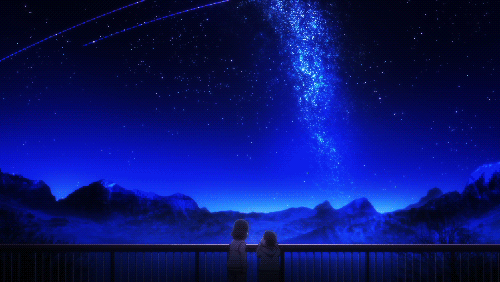
💤 Saturn/Pluto in the 12H may have a harder time with sleeping the same for Scorpio or Capricorn in the 12H
💤 When Virgo or Gemini placements are under stress they can often talk a lot as a mechanism to keep themselves chill/calm
💤 You may share the same type of humor with people who have their Mercury in the same sign as yours
💤 Moon in 6th house natives. The Moon will give you servitude attitude and will help others without having any selfish motive, they are truly kind
💤 Chiron in the 5H natives may act childish when they feel comfortable or safe because that's what their inner child feels as well
💤 Juno in Leo natives will love a spouse who has a funny/creative way of seeing life, don't make these natives feel depressed because you'll regret it
💤 Cancer Scorpio or Pisces in the 6H natives share a similar nurturing style and they can often nurture others with their energy
💤 Capricorn Placements are often labelled as being "workaholics" because of their strong ambition to never give up ans to finish their thing

💤🌊 Since Pisces Season started today, I wanted to post this a memento to it🌊💤
Hope you all have good a start of the week!☀️🌊
And happy Pisces Season!!🌊☀️♥️
Harmoonix ☀️🌊☀️
#astrology#astro observations#astrology observations#placements#astro notes#birth chart#astro community#ascendant#pisces#pisces placements#pisces season#dreamy#blue#blue aesthetic#water#water aesthetic#horoscope#venus#astronote#astro#astro seek#astro com#astro.com#love astrology#harmoonix#asteroids#moon phases
2K notes
·
View notes
Text
What is Dataflow?
This post is inspired by another post about the Crowd Strike IT disaster and a bunch of people being interested in what I mean by Dataflow. Dataflow is my absolute jam and I'm happy to answer as many questions as you like on it. I even put referential pictures in like I'm writing an article, what fun!
I'll probably split this into multiple parts because it'll be a huge post otherwise but here we go!
A Brief History

Our world is dependent on the flow of data. It exists in almost every aspect of our lives and has done so arguably for hundreds if not thousands of years.
At the end of the day, the flow of data is the flow of knowledge and information. Normally most of us refer to data in the context of computing technology (our phones, PCs, tablets etc) but, if we want to get historical about it, the invention of writing and the invention of the Printing Press were great leaps forward in how we increased the flow of information.
Modern Day IT exists for one reason - To support the flow of data.
Whether it's buying something at a shop, sitting staring at an excel sheet at work, or watching Netflix - All of the technology you interact with is to support the flow of data.
Understanding and managing the flow of data is as important to getting us to where we are right now as when we first learned to control and manage water to provide irrigation for early farming and settlement.
Engineering Rigor
When the majority of us turn on the tap to have a drink or take a shower, we expect water to come out. We trust that the water is clean, and we trust that our homes can receive a steady supply of water.
Most of us trust our central heating (insert boiler joke here) and the plugs/sockets in our homes to provide gas and electricity. The reason we trust all of these flows is because there's been rigorous engineering standards built up over decades and centuries.

For example, Scottish Water will understand every component part that makes up their water pipelines. Those pipes, valves, fitting etc will comply with a national, or in some cases international, standard. These companies have diagrams that clearly map all of this out, mostly because they have to legally but also because it also vital for disaster recovery and other compliance issues.
Modern IT
And this is where modern day IT has problems. I'm not saying that modern day tech is a pile of shit. We all have great phones, our PCs can play good games, but it's one thing to craft well-designed products and another thing entirely to think about they all work together.
Because that is what's happened over the past few decades of IT. Organisations have piled on the latest plug-and-play technology (Software or Hardware) and they've built up complex legacy systems that no one really knows how they all work together. They've lost track of how data flows across their organisation which makes the work of cybersecurity, disaster recovery, compliance and general business transformation teams a nightmare.

Some of these systems are entirely dependent on other systems to operate. But that dependency isn't documented. The vast majority of digital transformation projects fail because they get halfway through and realise they hadn't factored in a system that they thought was nothing but was vital to the organisation running.
And this isn't just for-profit organisations, this is the health services, this is national infrastructure, it's everyone.
There's not yet a single standard that says "This is how organisations should control, manage and govern their flows of data."
Why is that relevant to the companies that were affected by Crowd Strike? Would it have stopped it?
Maybe, maybe not. But considering the global impact, it doesn't look like many organisations were prepared for the possibility of a huge chunk of their IT infrastructure going down.
Understanding dataflows help with the preparation for events like this, so organisations can move to mitigate them, and also the recovery side when they do happen. Organisations need to understand which systems are a priority to get back operational and which can be left.
The problem I'm seeing from a lot of organisations at the moment is that they don't know which systems to recover first, and are losing money and reputation while they fight to get things back online. A lot of them are just winging it.
Conclusion of Part 1
Next time I can totally go into diagramming if any of you are interested in that.
How can any organisation actually map their dataflow and what things need to be considered to do so. It'll come across like common sense, but that's why an actual standard is so desperately needed!
791 notes
·
View notes